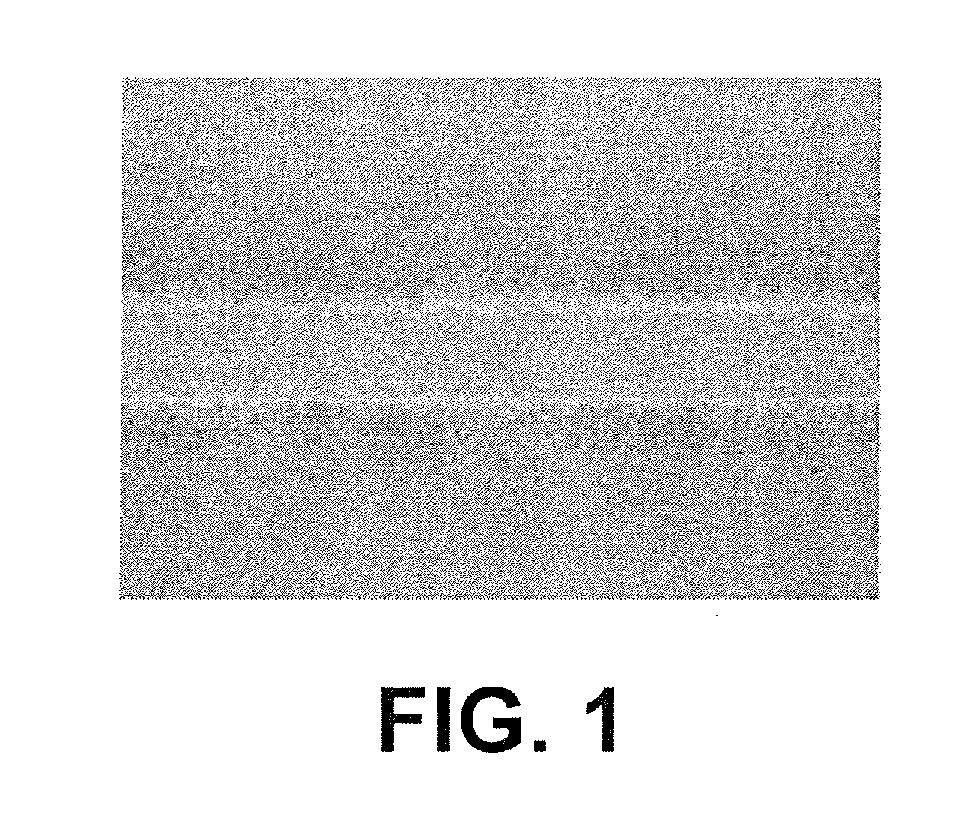Pattern transfer method and apparatus, flexible display panel, flexible solar cell, electronic book, thin film transistor, electromagnetic-shielding sheet, and flexible printed circuit board applying thereof
- Summary
- Abstract
- Description
- Claims
- Application Information
AI Technical Summary
Benefits of technology
Problems solved by technology
Method used
Image
Examples
first embodiment
[0091]Referring to FIG. 2, a pattern transfer method according to the present invention comprises: a first step of forming a transfer material layer on a substrate 100 (S100); a second step of hardening the transfer material layer in the solid state (S110); a third step of patterning the transfer material layer by irradiating a laser beam to the hardened transfer material layer in the solid state (S120); and a fourth step of pressing the patterned transfer material layer in the solid state and a flexible substrate 200 facing each other and transferring the transfer material layer to the flexible substrate 200 by a viscous force of the flexible substrate 200 occurring in a facing part between the transfer material layer and the flexible substrate 200 by irradiating the laser beam from the transfer material layer to the flexible substrate 200 or from the flexible substrate 200to the transfer material layer (S130).
[0092]The first step (S100) is a step of forming a transfer material lay...
fourth embodiment
[0124]Referring to FIG. 8, a pattern transfer method according to the present invention includes: a first step (S300) of forming a hydrophobic coating layer 10 on a substrate 20 and selectively removing the hydrophobic coating layer 10 using laser application plasma to form a surface mold 90; a second step (S310) of forming a pattern by providing and drying a pattern material 50 on the surface mold 90, and then by sintering the surface mold 90 at a high temperature; a third step (S320) of pressing the surface mold 90 and a target substrate 80 facing each other and transferring the pattern material 50 to the target substrate 80 by a viscous force of the target substrate 80 occurring in a facing part between the pattern material 50 on the surface mold 90 and the target substrate 80 by irradiating the laser beam from the surface mold 90 to the target substrate 80.
[0125]In the first step (S300), a hydrophobic Self-Assembled Monolayers (referred to as ‘SAM’ hereinafter) is coated on a ha...
PUM
| Property | Measurement | Unit |
|---|---|---|
| Flexibility | aaaaa | aaaaa |
| Hydrophilicity | aaaaa | aaaaa |
| Hydrophobicity | aaaaa | aaaaa |
Abstract
Description
Claims
Application Information
 Login to View More
Login to View More - Generate Ideas
- Intellectual Property
- Life Sciences
- Materials
- Tech Scout
- Unparalleled Data Quality
- Higher Quality Content
- 60% Fewer Hallucinations
Browse by: Latest US Patents, China's latest patents, Technical Efficacy Thesaurus, Application Domain, Technology Topic, Popular Technical Reports.
© 2025 PatSnap. All rights reserved.Legal|Privacy policy|Modern Slavery Act Transparency Statement|Sitemap|About US| Contact US: help@patsnap.com



